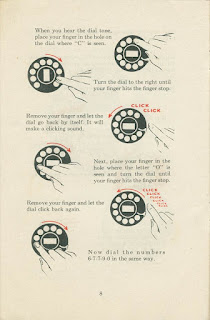Comm. 'Ships
 History does not have accurate, thorough records of mankind's technological advancements. Scientists, refusing to accept holes in our timeline, often guess at our progress based on related historical findings, such as when early humans transitioned from stone tools to metal tools, but what happens in between the written history remains a collection of unfilled gaps.
History does not have accurate, thorough records of mankind's technological advancements. Scientists, refusing to accept holes in our timeline, often guess at our progress based on related historical findings, such as when early humans transitioned from stone tools to metal tools, but what happens in between the written history remains a collection of unfilled gaps.But there is one thing that has existed in the timeline of every generation: communication (well, barring the Evolutionists' hypothetical narrative where millions of years passed in the development of man before he learned to speak). The status and culture of our relationships with each other have transitioned through several iterations over time. Of course, today we find ourselves in the relational murk of technological communication. All of which has an interesting effect on relational communication ... or, the idea of "communicational relationships" as a philosophical point of study. The assumption, then, is that some relationships are communicational, and some are not. We want to focus on the ones that are.
Communication, itself, recently abbreviated "comm." for its incessant use in modern texts, has seen numerous conversions in the last 40 to 60 years, due to technological advancements. Likewise, the ideologies behind relationships, abbreviated in the Internet Age simply as "ships" (thank you, Lego Batman), have seen changes too numerous to track over the course of the existence of humanity. But despite all of the changes in the communicational relationships (Comm 'Ships) of mankind, one Comm 'Ship that has yet to experience change is the progression of the relationship between God and man.

That is not to say that there haven't been variations in the methodology and technology of our communication with the Creator of the universe. In point of fact, simply reading the first five books of the Bible speaks to the contrary, as God communicates through fire, through stone tablets, and even through obstinate equine farm animals. However, it is to say that our understanding of the way in which this communicational relationship develops has grown through the years, allowing us more opportunities and resources for strengthening the relational bond we have through Christ in our methods of communication.
Last week, a friend of mine presented a breakout session on "How to Make Prayer Your Home" at a conference in the area. The basic premise, being, that our most important communicational relationship is that of our own soul with He, who created it. Prayer being the principal source of communication, the true relational "home" of the believer should in fact be prayer. He discussed the four stages of progress in a growing "comm.'ship" noting how the communicational relationship with our Lord Jesus is the best example we have to identify such healthy relationships. Note: he did not use the phrase "comm ship," nor did he use the texting linguistics with which I outline, below, but the content remains the same. I found these very helpful, but hopefully, they can encourage you, as well.
The
Four Stages of Comm.'Ships with Someone
(but, most especially with Jesus):
@
– Trying to speak AT someone
(The initial contact in relationships)
(The initial contact in relationships)
2 – Learning to speak TO someone
(The first experience in developing relationships)
(The first experience in developing relationships)
w/ – The desire to speak WITH someone
(The willingness to actively listen and build relationships)
n – Entering INTO a relationship with someone(The willingness to actively listen and build relationships)
(The move beyond words, or "abiding in" relationship)
Comments
Post a Comment
Comments? Remember, you may be representing Jesus to someone.